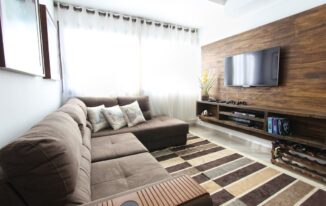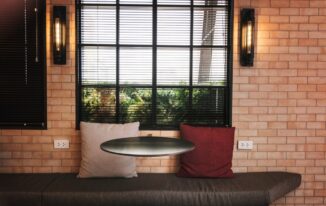Table of Contents:
- Benefits of Integrating Your Pool and Patio
- Key Design Principles
- Choosing the Right Materials
- Selecting Furniture and Decor
- Essential Safety Tips
- Maintenance Tips for Longevity
Benefits of Integrating Your Pool and Patio
Integrating your pool and patio can transform your backyard into a cohesive and functional outdoor living space. Not only does this approach enhance visual appeal, but it also increases the usability of your space, making it ideal for hosting gatherings, relaxing, and even increasing the value of your home. A well-thought-out pool and patio design ensures that both elements complement each other and function as a unified area.
Creating harmony between your pool and patio involves a blend of aesthetics and practicality. The outcome should reflect your style and how you envision using the space. For example, consider incorporating an outdoor kitchen or barbecue area if you enjoy hosting parties. On the other hand, if relaxation is your primary goal, include loungers and shaded areas. When these elements are seamlessly integrated, they create an inviting atmosphere that encourages outdoor living and entertaining, making the most of every square foot of your backyard.

Key Design Principles
When planning to integrate your pool and patio, consider principles of harmony and balance. Elements such as color schemes, textures, and architectural styles should complement each other. Some believe integration should promote a seamless flow between spaces. Think about how you move from one area to another and ensure no abrupt changes in the design. Smooth transitions create a visually pleasing environment and enhance the overall functionality.
Color and Texture
Start by choosing a color palette that unifies the space. Natural tones and earthy materials often work well to create a tranquil atmosphere. Texture is also crucial; utilizing materials like wood, stone, and concrete can introduce visual interest and depth to your design. For instance, a wooden deck with stone tiles around the pool can create a rustic yet elegant look. Consider complementary colors and textures that echo the natural surroundings to make the space feel like an extension of the landscape. Transform your backyard into a haven with innovative outdoor living space ideas that blend comfort, functionality, and style.
Architectural Consistency
Maintain architectural consistency between your home and outdoor spaces. This may involve using similar materials or design elements to ensure a cohesive look. For example, if your home features modern architecture, sleek lines, and minimalistic features around the pool and patio, it will create a harmonious feel. Architectural consistency also includes echoing design patterns like geometric shapes or organic curves in your home’s interior.
Choosing the Right Materials
Selecting the appropriate materials is crucial for both aesthetics and durability. Opt for materials that are weather-resistant and complement your home’s style. For instance, natural stone offers a timeless look, while composite decking provides durability and low maintenance. The goal is to select materials that look good and stand the test of time. High-quality materials can significantly reduce long-term maintenance costs and efforts.
Weather-Resistant Options
Investing in weather-resistant materials ensures your outdoor space stays beautiful and functional for years. Materials like treated wood, synthetic decking, and certain types of stone can withstand the elements and require less frequent maintenance compared to others. For instance, composite decking is an excellent option as it resists fading, staining, and mold. Similarly, treated wood like cedar or teak is resistant to rot, decay, and insect damage, making it ideal for outdoor settings.
Aesthetic Compatibility
Your material choices should also align with the overall aesthetic of your home and landscape. For example, using the exact stone for your patio that appears on your home’s exterior can create a unified and appealing look. The key is ensuring the materials blend well with the existing environment. Whether you choose sleek concrete for a modern vibe or rustic stone for a traditional look, consistency in material selection is essential for a polished finish.
Selecting Furniture and Decor
Furniture and decor are vital in tying your pool and patio together. Opt for weather-resistant furniture that provides comfort and style. Add outdoor rugs, cushions, and throw pillows to create a cozy and inviting space. As a tip, modular furniture systems allow for flexible seating arrangements. This flexibility is critical to accommodating various activities and gatherings, making your outdoor space highly functional.
Weather-Resistant Furniture
Investing in high-quality, weather-resistant furniture ensures longevity and durability. Materials like synthetic rattan, treated wood, and aluminum are excellent choices for outdoor settings. These materials can withstand harsh weather conditions, ensuring that your investment lasts. For instance, treated wood furniture can resist rot and insects, while aluminum furniture is rust-resistant and lightweight, making it easy to move.
Comfort and Style
Balance functionality with style by selecting pieces that offer comfort and aesthetic appeal. Easy-care outdoor rugs and vibrant cushions can add color and comfort, making your space more welcoming. Choose cushions with removable covers for easy cleaning and maintenance. Additionally, outdoor umbrellas and pergolas can provide shade and protection from the elements, enhancing comfort.
Essential Safety Tips
Safety should be a priority when integrating your pool and patio. Install non-slip surfaces around the pool and regular safety checks to ensure all equipment functions correctly. Additionally, child safety mechanisms like fences and pool covers can prevent accidents. Safety features protect your family and guests and ensure your enjoyment of the space without worry.
Non-Slip Surfaces
Using non-slip materials for pool surrounds can prevent slips and falls, enhancing safety. Textured tiles, treated concrete, and rubber matting are excellent choices. These surfaces provide traction even when wet, reducing the risk of accidents. Look for materials designed for wet areas to ensure maximum safety and durability.
Child Safety
Implementing child safety features such as fencing, gates, and pool covers can provide peace of mind. Regular safety checks ensure that all mechanisms are functioning correctly. Ensure that fences are of adequate height and have self-closing, self-latching gates. Pool alarms and safety covers can also serve as additional layers of protection, alerting you to unsupervised access.
Maintenance Tips for Longevity
Regular maintenance is crucial to preserve the beauty and functionality of your integrated outdoor space. Clean pool surfaces and patio areas routinely and check for wear and tear to address issues promptly. Investing in high-quality materials initially can save time and money in the long run. A well-maintained space looks better and lasts longer, providing years of enjoyment.
Routine Cleaning
Maintaining cleanliness is essential for both aesthetic and health reasons. Regularly skimming the pool, sweeping the patio, and cleaning furniture will keep the area inviting and safe. Use gentle cleaners and soft brushes to avoid damaging surfaces—regularly clean and store cushions and fabrics to prevent mold and mildew. Regular water testing and chemical balancing are vital for water quality and safety for pools.
Preventative Measures
Addressing wear and tear as soon as it appears can prevent minor issues from becoming major problems. This includes reapplying sealants, replacing damaged tiles, and conducting regular equipment checks. For example, inspect your deck for signs of wear and re-stain or seal as needed to protect the wood. Routine maintenance keeps your space looking its best and prolongs the life of your features and structures.



